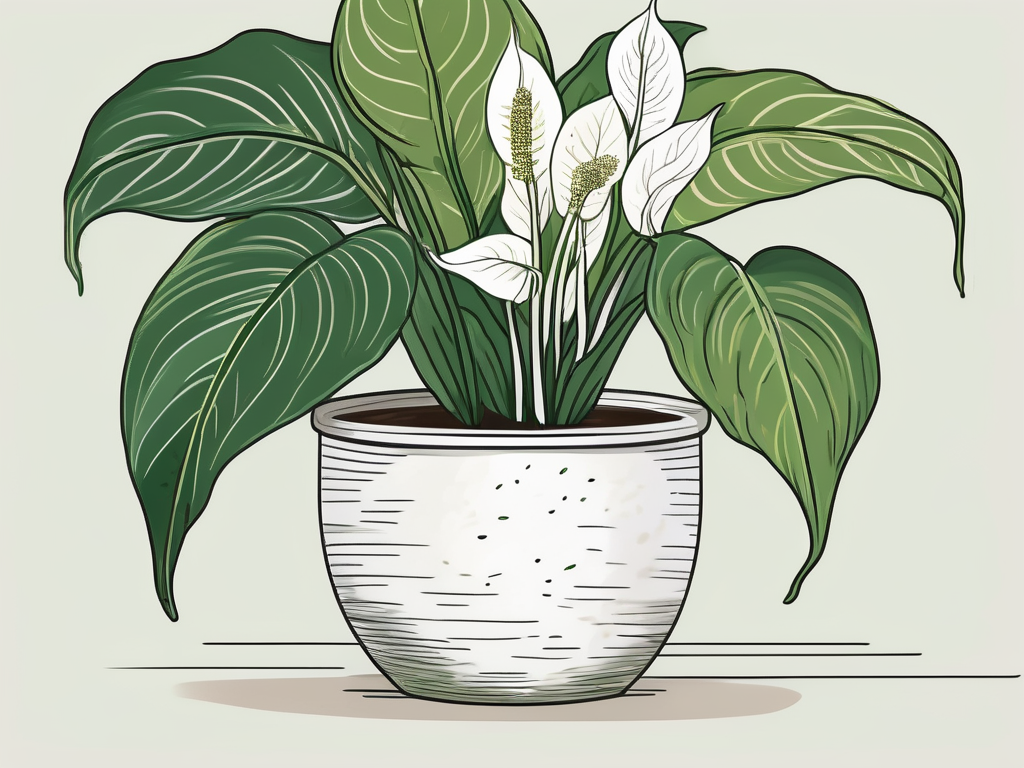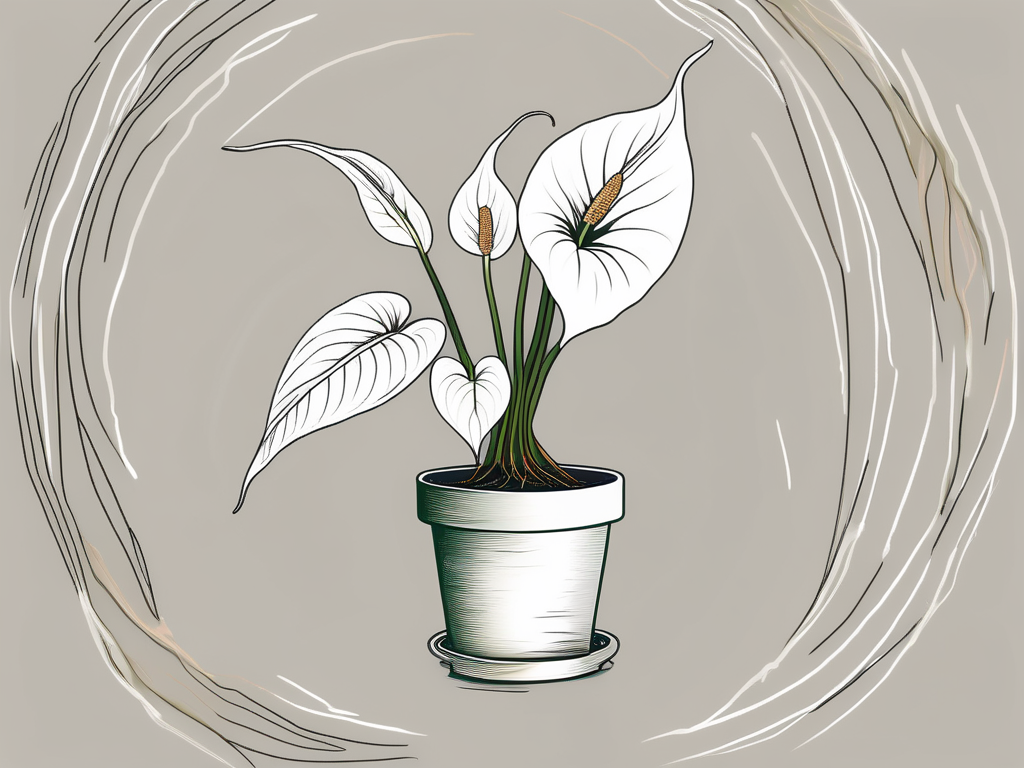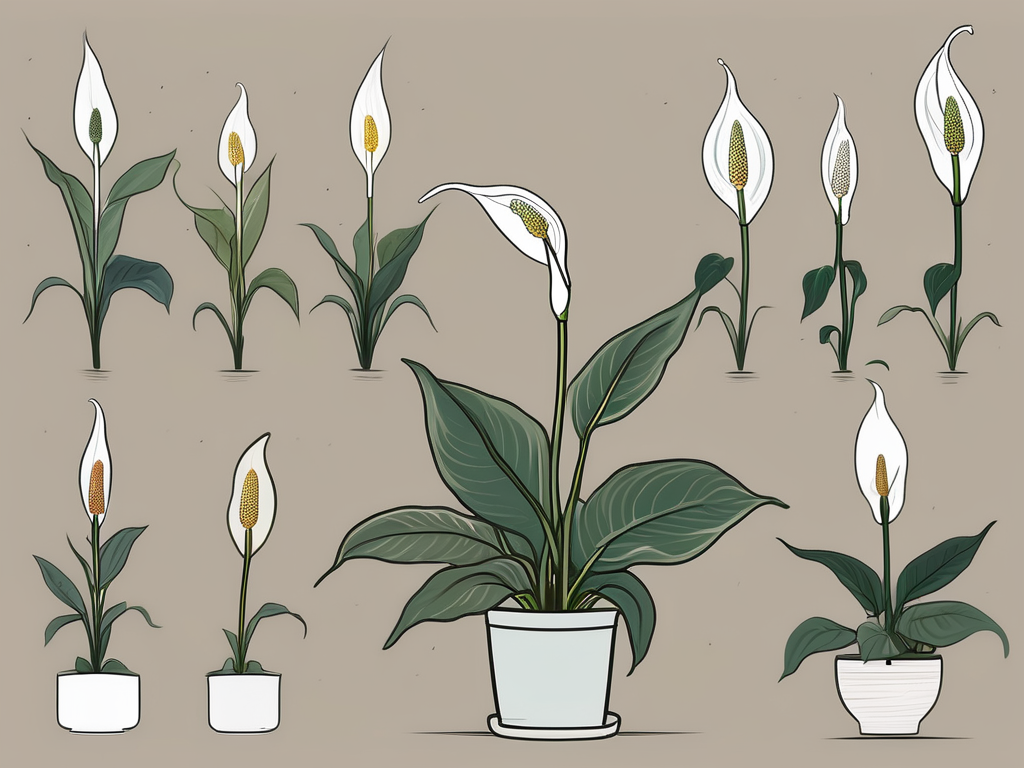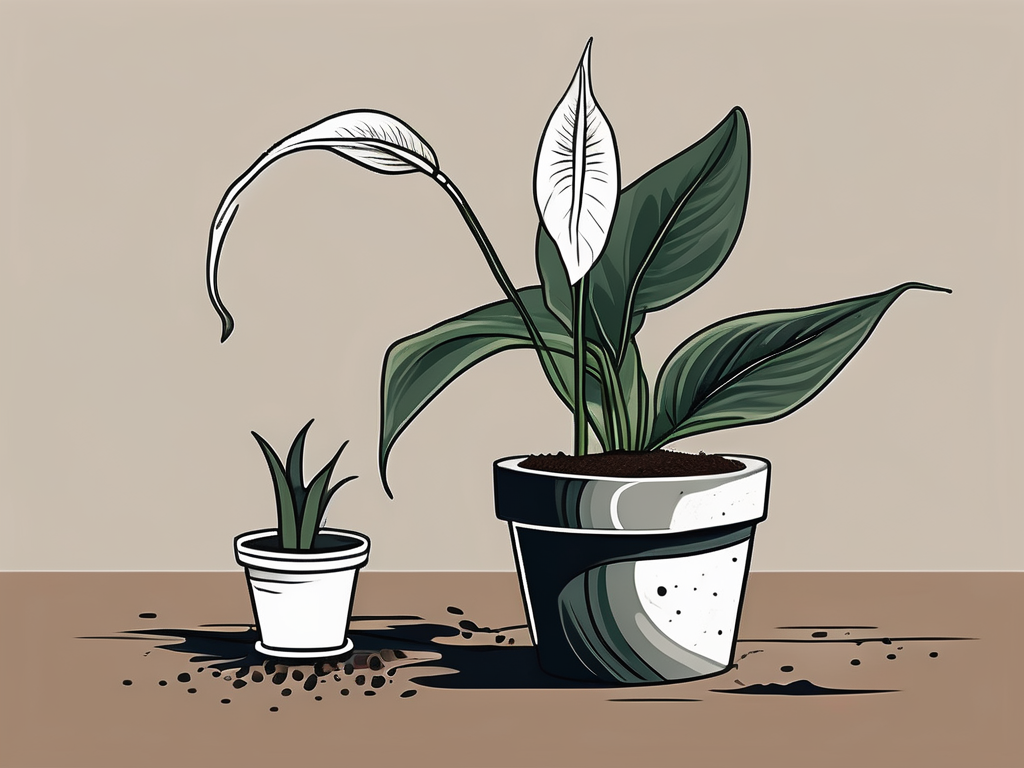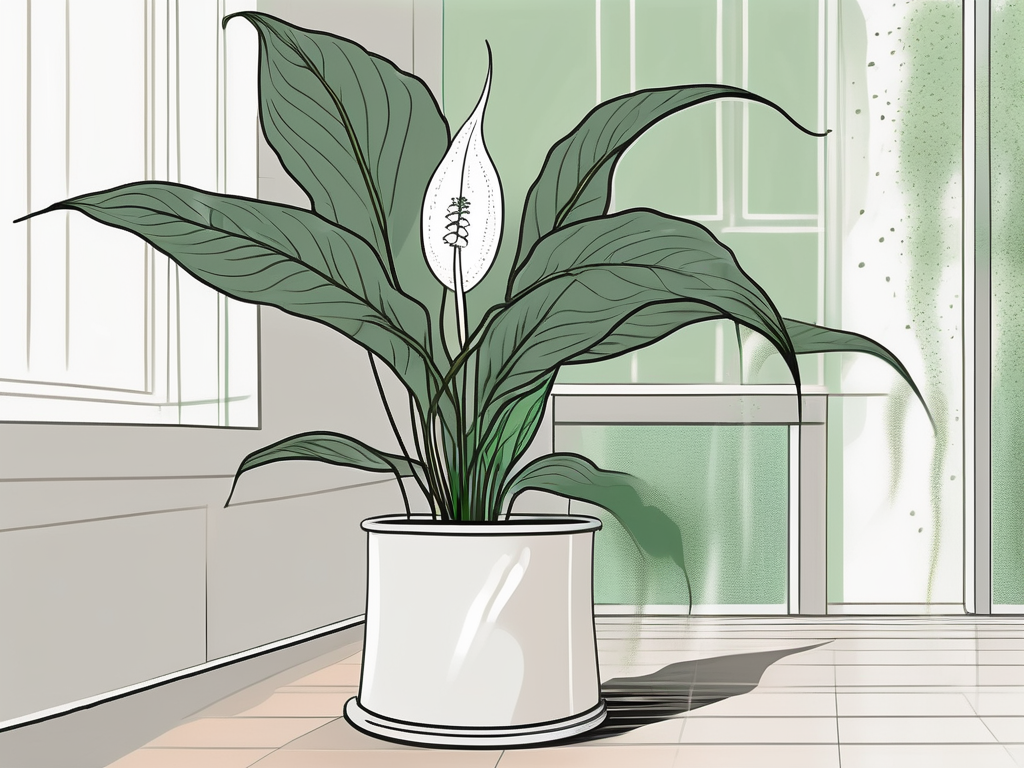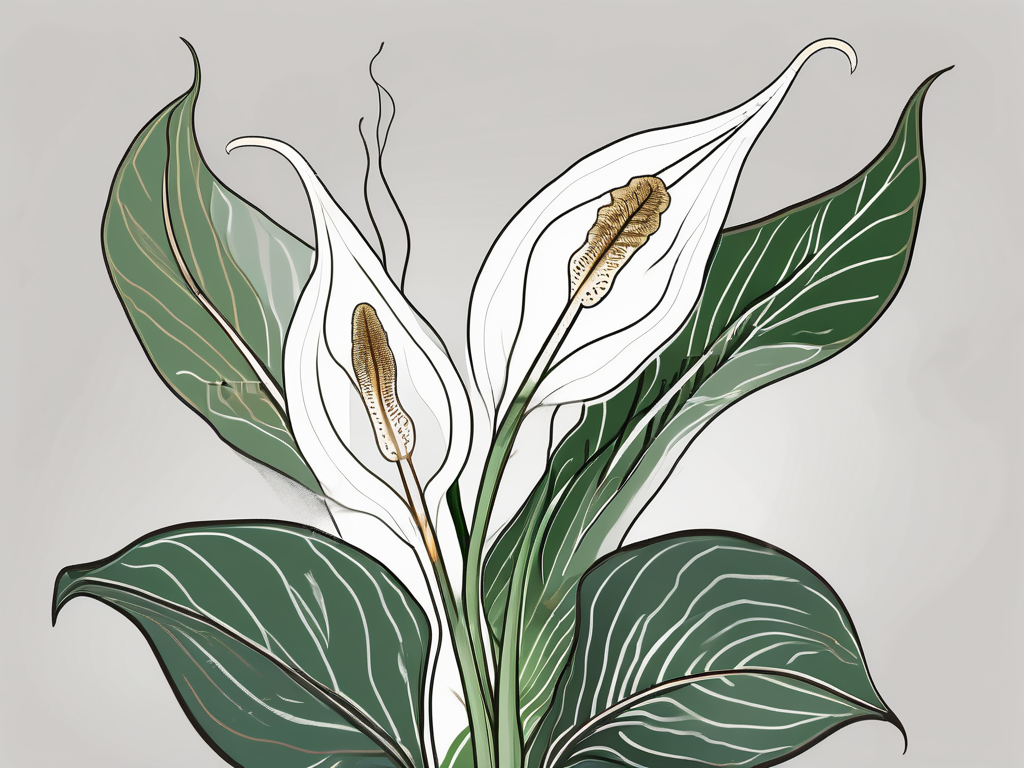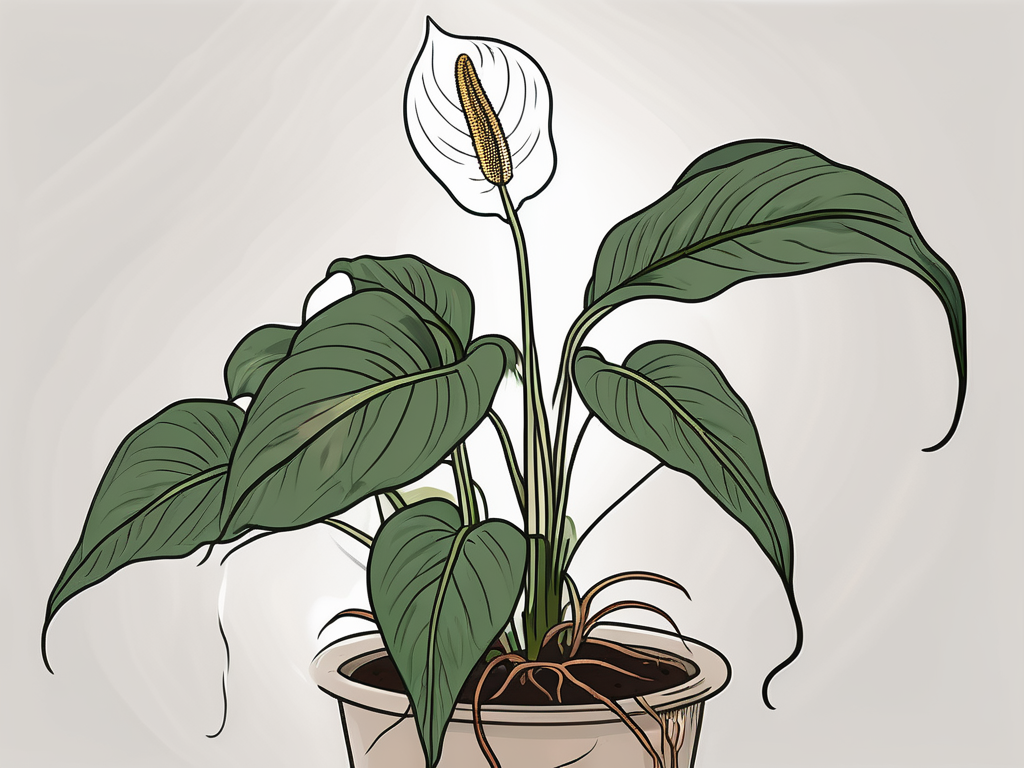
Peace lilies are a favorite among plant lovers due to their lush greenery and elegant white blooms. However, these beautiful plants can be susceptible to root rot, a condition that can be detrimental if not addressed properly. Root rot is often caused by overwatering, poor drainage, or a combination of these factors. In this post, we'll explore practical ways to prevent peace lily root rot and keep your plants healthy and thriving.
We'll cover everything from understanding the signs of root rot to choosing the best soil and potting solutions. We'll also share watering tips and discuss the importance of a well-ventilated environment. Whether you're a seasoned plant parent or just starting your plant journey, these insights will help you keep your peace lilies in top condition.
Recognizing the Signs of Root Rot
Before diving into prevention, it's crucial to recognize the symptoms of root rot. Early detection can make a significant difference in saving your peace lily. Here are some key signs to watch for:
- Yellowing Leaves: If your peace lily's leaves are turning yellow, especially at the base, it could be an early indicator of root rot.
- Wilting Despite Moist Soil: A wilting plant, despite having adequate moisture, is a classic sign of root issues.
- Unpleasant Odor: A foul smell emanating from the soil often indicates decaying roots.
- Brown, Mushy Roots: When you inspect the roots, healthy ones should be firm and white. Brown, mushy roots are a clear sign of root rot.
Spotting these signs promptly can help you take corrective action before the damage becomes irreversible. Once you've identified the symptoms, it's time to explore preventive measures to keep your plant healthy from the start.
Choosing the Right Pot and Soil
The pot and soil you choose play a vital role in preventing root rot. Peace lilies prefer a well-draining environment, so you'll need to consider both the pot and the soil mix carefully.
Picking the Perfect Pot
When selecting a pot, drainage is your best friend. Always opt for pots with drainage holes to allow excess water to escape. Here are some points to consider:
- Material: Terra cotta pots are excellent for peace lilies because they allow for better breathability and moisture evaporation compared to plastic pots.
- Size: Choose a pot that's slightly larger than the current root ball. A pot that's too big can retain excess moisture.
Soil Selection
The right soil mix is crucial for avoiding waterlogged conditions. Peace lilies thrive in a light, well-draining mix. Consider these tips:
- Ingredients: Use a peat-based soil mix combined with perlite or sand to improve drainage.
- Pre-Mixed Options: There are commercial soil mixes available specifically for aroids, which are perfect for peace lilies.
By choosing the right pot and soil, you're setting a strong foundation for your peace lily's health. Next, let's look at how to water them without inviting root rot.
Watering Wisely
Overwatering is the number one cause of root rot in peace lilies. While they do enjoy consistent moisture, it's important to strike the right balance. Here’s how you can water wisely:
Understand Your Plant's Needs
Peace lilies generally prefer to dry out slightly between waterings. To determine when it's time to water, do the finger test:
- Check the Topsoil: Insert your finger about an inch into the soil. If it feels dry, it’s time to water. If it’s still moist, wait a few more days.
Proper Watering Techniques
When watering, aim for thoroughness without drowning the plant:
- Even Saturation: Water evenly around the plant to ensure all roots receive moisture.
- Drain Excess: Allow the pot to drain completely after watering. Never let the plant sit in water.
By understanding your peace lily’s moisture needs and watering appropriately, you can greatly reduce the risk of root rot. Let’s move on to environmental considerations next.
Ensuring Proper Ventilation
Ventilation might not be the first thing that comes to mind when caring for peace lilies, but it's surprisingly important. Good air circulation helps prevent excess moisture in the soil, reducing the risk of root rot.
Location Matters
When choosing a spot for your peace lily, consider these points:
- Roomy Spaces: Avoid cramped areas. Open spaces allow for better air movement.
- Indirect Light: Place your plant in bright, indirect light. Direct sunlight can scorch the leaves, while too little light can slow evaporation.
Additional Tips for Better Airflow
Here are some practical ways to improve airflow around your plant:
- Use a Fan: A small fan can keep air circulating, especially in stuffy rooms.
- Rotate the Plant: Regularly rotating the plant ensures even exposure to light and air.
By ensuring your peace lily is in a well-ventilated area, you'll help prevent the damp conditions that foster root rot. Next, we’ll discuss the role of fertilization in plant health.
Fertilizing with Care
Fertilization can significantly boost your peace lily's health, but overdoing it can lead to problems, including root rot. Here’s how to fertilize wisely:
The Right Fertilizer
Peace lilies don’t require heavy feeding. Here’s what you should know:
- Type: Use a balanced, water-soluble fertilizer. A 20-20-20 formula works well.
- Frequency: Fertilize every 6-8 weeks during the growing season (spring and summer).
Application Tips
When applying fertilizer, less is often more:
- Dilute: Always dilute the fertilizer to half the recommended strength.
- Even Distribution: Water the plant first, then apply the fertilizer solution to avoid root burn.
By fertilizing with care, you provide your peace lily with the nutrients it needs without overwhelming it. Let’s move on to regular maintenance tips.
Regular Maintenance for Healthy Roots
Regular maintenance can help you catch potential problems before they escalate. Here are some maintenance practices to incorporate into your routine:
Routine Inspections
Perform regular checks to ensure your peace lily is in good health:
- Leaf Check: Look for signs of yellowing, browning, or spots.
- Root Inspection: If you suspect root rot, gently remove the plant from its pot and check the roots.
Pruning and Cleaning
Occasional pruning and cleaning can promote better growth:
- Remove Dead Leaves: Trim away any dead or yellowing leaves to encourage new growth.
- Clean the Leaves: Wipe the leaves with a damp cloth to remove dust, which can impede photosynthesis.
Consistent maintenance helps keep your peace lily thriving and minimizes the risk of root rot. Let’s discuss what to do if your plant does happen to develop root rot.
Rescuing a Rotting Peace Lily
Even with the best care, sometimes root rot happens. If you notice the symptoms, act quickly to save your plant:
Steps to Recovery
If you suspect root rot, here’s what you can do:
- Remove the Plant: Gently remove the peace lily from its pot.
- Trim Affected Roots: Use sterilized scissors to cut away any brown, mushy roots.
- Repot: Place the plant in fresh, well-draining soil and a clean pot with good drainage.
Aftercare
Once repotted, follow these aftercare tips:
- Reduce Watering: Water sparingly until the plant shows new growth.
- Monitor Closely: Keep a close eye on the plant for any signs of further distress.
With patience and care, your peace lily can recover from root rot. Let’s wrap up with some additional tips for overall plant health.
Additional Tips for Thriving Peace Lilies
Beyond preventing root rot, there are other ways to ensure your peace lily remains vibrant and healthy:
Ideal Conditions
Understanding the ideal conditions for peace lilies can optimize their growth:
- Temperature: Keep the plant in temperatures between 65-85°F (18-29°C).
- Humidity: Peace lilies enjoy high humidity. Consider using a humidity tray or misting the leaves occasionally.
Common Pests
Knowing how to handle common pests is also key:
- Spider Mites and Aphids: A gentle wash with soapy water can help remove them.
- Preventative Measures: Regularly inspect your plant and surrounding area for any signs of pests.
By keeping these tips in mind, you’ll create an environment where your peace lily can thrive, free from the threat of root rot and pests.
Final Thoughts
To sum it up, preventing root rot in peace lilies involves recognizing the signs early, choosing the right pot and soil, watering wisely, ensuring proper ventilation, and maintaining a regular care routine. By taking these steps, you can enjoy a healthy, beautiful peace lily that brightens up your space.
At Cafe Planta, we’re passionate about helping you care for your plants. If you have questions or need advice, we’re just an email away, or you can reach out to us on Instagram. Whether you're starting your plant journey or looking to expand your collection, we’re here to support you every step of the way.














